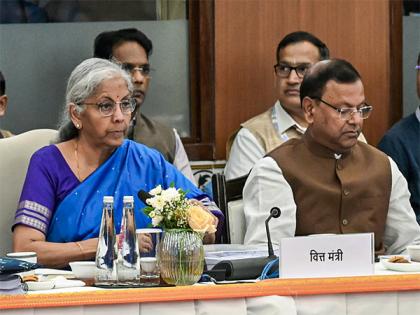GST rates slashed across sectors to provide Diwali bonanza for consumers
By ANI | Updated: September 3, 2025 23:15 IST2025-09-03T23:14:42+5:302025-09-03T23:15:16+5:30
New Delhi [India], September 3 : In a major reform aimed at providing relief to households, farmers, businesses and ...

GST rates slashed across sectors to provide Diwali bonanza for consumers
New Delhi [India], September 3 : In a major reform aimed at providing relief to households, farmers, businesses and the healthcare sector, Finance Minister Nirmala Sitharaman on Wednesday announced a sweeping reduction in Goods and Services Tax (GST) rates on a wide range of essential items, automobiles, agriculture inputs, and electronic appliances. Termed as the "Next-Gen GST Reform," the decision comes as a historic Diwali gift to the nation and is expected to ease the cost of living while boosting economic activity.
The 56th GST council meeting decided to rationalise GST rates to two slabs of 5 per cent and 18 per cent by merging the 12 per cent and 28 per cent rates.
GST rates on daily essentials items such as hair oil, shampoo, toothpaste, toilet soap bars, toothbrushes and shaving cream have been slashed from 18 per cent to just 5 per cent. Similarly, butter, ghee, cheese, dairy spreads, pre-packaged namkeens, bhujia and mixtures, utensils, feeding bottles, napkins for babies, clinical diapers and sewing machines will now attract only 5 per cent GST instead of the earlier 12 per cent.
In a bid to make healthcare more affordable, the GST Council has exempted individual health and life insurance policies from GST, bringing them down from 18 per cent to nil. Thermometers, medical-grade oxygen, diagnostic kits, reagents, glucometers, test strips and corrective spectacles have also seen GST rates cut to 5 per cent, easing the burden on patients and healthcare providers.
The government has also focused on giving relief to farmers and the agriculture sector. Tractor tyres, tractor parts and specified agricultural machinery for soil preparation, cultivation, harvesting and threshing will now attract 5 per cent GST instead of 18 per cent or 12 per cent earlier. Drip irrigation systems, sprinklers, bio-pesticides and micronutrients have also been brought under the 5 per cent slab, reducing input costs for farmers.
Automobiles have become more affordable, with petrol, LPG and CNG hybrid cars (up to 1200 cc and 4000 mm) seeing GST rates cut from 28 per cent to 18 per cent. Diesel hybrid cars (up to 1500 cc and 4000 mm), three-wheelers, motorcycles (350 cc and below) and goods transport vehicles will also now attract 18 per cent GST instead of 28 per cent earlier.
The GST council has also given relief to the education sector. GST on maps, charts, globes, pencils, sharpeners, crayons, pastels, exercise books, notebooks and erasers has been completely removed, making them tax-free.
Electronic appliances such as air conditioners, televisions, monitors, projectors and dishwashers will now attract 18 per cent GST, down from 28 per cent.
Prime Minister Narendra Modi has said that the new GST rates are aimed at benefiting every Indian. "Taxes for the general public will be reduced substantially. Our MSMEs and small entrepreneurs will get huge benefit. Everyday items will become cheaper and this will give a boost to the economy," he said.
The government has also introduced process reforms, including automatic registration within three working days and faster refunds through system-based risk evaluation.
Net revenue implication will be Rs 48,000 crore for the government from rate rationalisation of GST
Disclaimer: This post has been auto-published from an agency feed without any modifications to the text and has not been reviewed by an editor
Open in app